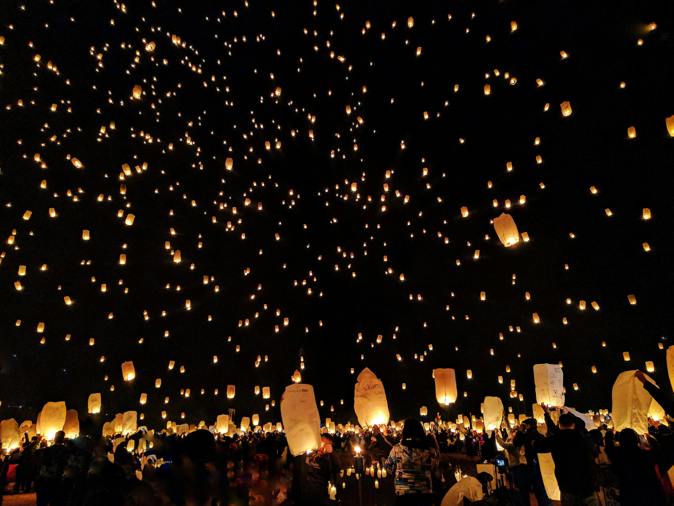


Diwali is not just a religious festival but also a cultural celebration that brings together people of different communities and backgrounds. It is a time for family gatherings, feasting, lighting lamps, fireworks, and sharing joy. The festival also signifies the start of the new financial year for many businesses in India.
In summary, Diwali is a festival with deep historical, cultural, and religious significance, celebrated with great enthusiasm and devotion across India and beyond.
Diwali, also known as Deepavali, is one of the most important and widely celebrated festivals in India. The word "Diwali" is derived from the Sanskrit word "Deepavali," which means "a row or series of lights." The festival signifies the victory of light over darkness, good over evil, and knowledge over ignorance. The history and significance of Diwali are rooted in various legends and traditions, which vary across different regions of India. Here are some of the prominent stories associated with the history of Diwali:
Return of Lord Rama to Ayodhya
Lord Krishna and Narakasura
Goddess Lakshmi's Birth and Marriage
Pandavas' Return
Diwali, often referred to as the Festival of Lights, is a special occasion marked by numerous unique aspects and traditions. Here are some elements that make Diwali special:
Each day of Diwali has its own significance:
Diwali, known as the Festival of Lights, is celebrated with a multitude of rituals and customs that vary slightly across different regions of India. Here is an overview of the main rituals associated with Diwali:
Lakshmi Puja
Lighting Lamps and Fireworks
Exchange of Sweets and Gifts
Charity and Donations
Community Events
Here are some interesting facts about Diwali, the Festival of Lights:
Ancient Origins: Diwali has been celebrated for over 2,500 years. Its origins can be traced back to ancient India, though the exact time of its inception is unknown.
Multi-Religious Celebration: While primarily a Hindu festival, Diwali is also celebrated by Jains, Sikhs, and Buddhists, each attributing different historical and religious significance to the festival.
Pan-Indian Festival: Diwali is celebrated across India with various regional variations. In North India, it celebrates the return of Lord Rama to Ayodhya, while in South India, it marks the victory of Lord Krishna over Narakasura. In West Bengal, it coincides with the worship of Goddess Kali.
Five-Day Festival: Diwali spans five days, each with its own significance:
Lighting Lamps: The lighting of oil lamps (diyas) and candles is central to Diwali celebrations. This tradition is meant to drive away darkness and evil and to welcome prosperity and happiness.
Rangoli: Creating colorful rangoli patterns at the entrances of homes is a popular Diwali tradition. These intricate designs are made using colored powders, rice, or flower petals and are believed to bring good luck.
Fireworks: Firecrackers and fireworks are an integral part of Diwali celebrations. They symbolize the joy of the people living on Earth, making the gods aware of their happiness.
Economic Boost: Diwali is one of the biggest shopping seasons in India. People buy new clothes, gifts, gold, silver, and other items. Businesses see a significant boost in sales during this period.
Community and Family Bonding: Diwali is a time for family reunions and social gatherings. People visit friends and relatives, exchange gifts and sweets, and partake in communal celebrations.
Environmental Concerns: The extensive use of fireworks during Diwali has raised concerns about air and noise pollution. Efforts are being made to promote eco-friendly celebrations, such as using green crackers and limiting firework use.
Health Impacts: The smoke and noise from fireworks can cause respiratory problems and stress, especially in vulnerable populations like the elderly, children, and pets.
Diwali Sweets: A wide variety of traditional sweets (mithai) like ladoos, barfis, jalebis, and more are prepared and shared during Diwali. These sweets are an essential part of the festive celebrations.
Global Celebration: Diwali is not just limited to India. It is celebrated by Indian communities around the world, including in countries like the USA, UK, Canada, Australia, and Malaysia. Major landmarks in various countries are often illuminated to mark the occasion.
Inner Light: Beyond the physical lighting of lamps, Diwali also symbolizes the inner light that protects from spiritual darkness. It is a time for self-reflection, spiritual awakening, and the pursuit of knowledge.
Charity and Compassion: Many people engage in charitable activities during Diwali, donating money, clothes, and food to those in need. This reflects the spirit of generosity and compassion that the festival embodies.